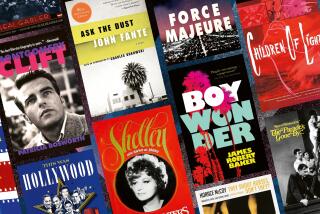To her, Thomas Pynchon is just Tom
In the early 1960s, Phyllis Gebauer and her husband, Fred, were living in Seattle. She was a Spanish teacher, and he was a mechanical engineer doing defense contract work at Boeing that he couldn’t really discuss. At a party celebrating a mutual friend’s new piano, the two met a technical writer employed at another part of Boeing doing work that he also couldn’t discuss. His name was Thomas Pynchon.
Fred and Tom began clowning around at the party. At one point they reached into the piano and plucked out the “Yogi Bear” theme song on its strings — “which did not delight the host,” Phyllis Gebauer said recently.
The relationship between Pynchon and the Gebauers lasted over the years. It was based on a strange combination: a shared reticence paired with playfulness. And a fondness for charades. In the early days of their friendship, Pynchon didn’t tell the Gebauers that he was writing a novel. They only found out when an inscribed copy of his first book, “V,” arrived in the mail in 1963. Pynchon eventually left the aerospace business and became one of America’s most famous and reclusive writers.
But he was still Tom to the Gebauers, and after each of his books was published he sent inscribed copies to his friends. The couple had what is believed to be the only known collection of signed first editions of Pynchon’s works.
Phyllis Gebauer — her husband died in 1998 — recently donated the collection to UCLA Extension, where she taught for more than two decades. “When Tom lived in L.A., he did a lot of research at the UCLA research library,” she said. “He likes the idea of these books being used to fund scholarships.”
In a mini-memoir of the couple’s relationship with Pynchon, “Tom and Us,” that was distributed at the event announcing the gift, Phyllis writes that Pynchon and Fred used to shoot toy rockets off the roof of their Houston house. She recalls that more than once she’d be talking to Pynchon on the phone, hand it over to Fred when she left for one of her graduate school classes — and return hours later to find Fred still sitting in their knotty pine-lined family room, still talking to Tom.
“Tom at the time was working on ‘The Crying of Lot 49,’ and when that book came out and I read about his heroine — Oedipa Maas — ‘layering lasagna’ at the beginning of Chapter One,” Phyllis writes, “well, I can’t prove it, but hey — I’m sure that was our lasagna!”
As their playful friendship continued, the Gebauers bought Pynchon a pig piñata, which they named Claude. A previously unpublished photograph of Phyllis, Claude and Pynchon — just his right arm, extending from behind a door with his fingers making a peace sign — appears at the back of “Tom and Us” and is dated 1965. It is one of the most recent photos of any part of the writer.
Most of Pynchon’s inscriptions to the Gebauers include personal comments. In “The Crying of Lot 49,” Pynchon wrote, “For Fred and Phyllis, who saw this first, though we’re still friends anyway. — Tom.” Claude was perhaps the inspiration for what is thought to be the most valuable inscription of Gebauer’s collection, the sketch of a smiling pig saying “Love” in the 1973 novel “Gravity’s Rainbow.” That book was Pynchon’s most controversial. In addition to winning a 1974 National Book Award, it was unanimously recommended by the judging committee to be awarded the Pulitzer Prize. However, the recommendation was overturned by the Pulitzer’s advisory board, which found the book “unreadable,” “turgid,” “overwritten” and “obscene”; it elected not to award any Pulitzer for fiction that year.
Gebauer says Pynchon is not reclusive but simply private. She channeled the author to describe his perspective: “Some people can pull this off, the balance between writing and going out to parties — Stephen King, Joyce Carol Oates. I get too easily distracted, and I’m not good at schmoozing.”
In 2010, Phyllis met up with Pynchon in New York and found that the writer is indeed able to move around without being recognized.
“We toured this whole Barcelona exhibit,” Gebauer said recently. “Nobody in his building knows who he is. Nobody knows what he does.”
In an era in which a Wikipedia scan identifies Pynchon’s wife, a literary agent, and son by name, his privacy could be one avid Googler away. Phyllis has discussed this precariousness with Pynchon. “In today’s world,” she said, “the privacy he gets is that people seldom read.”
More to Read
Sign up for our Book Club newsletter
Get the latest news, events and more from the Los Angeles Times Book Club, and help us get L.A. reading and talking.
You may occasionally receive promotional content from the Los Angeles Times.







